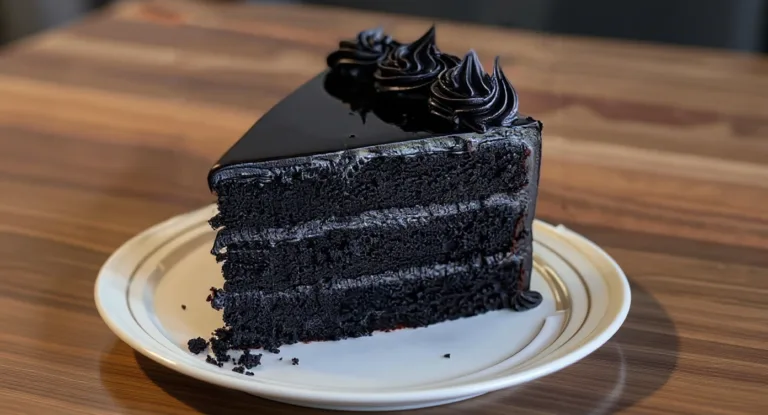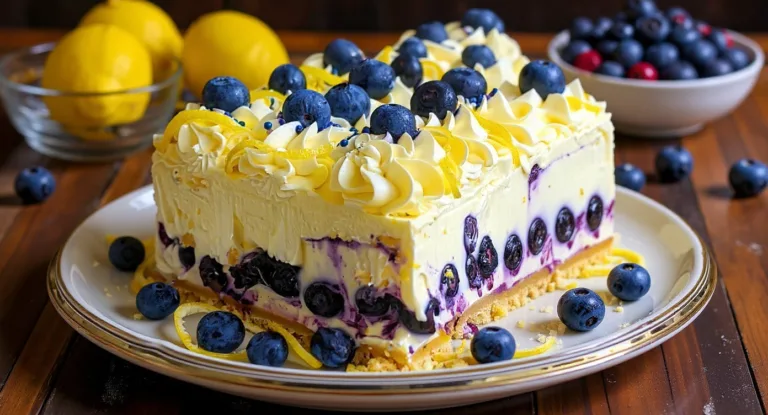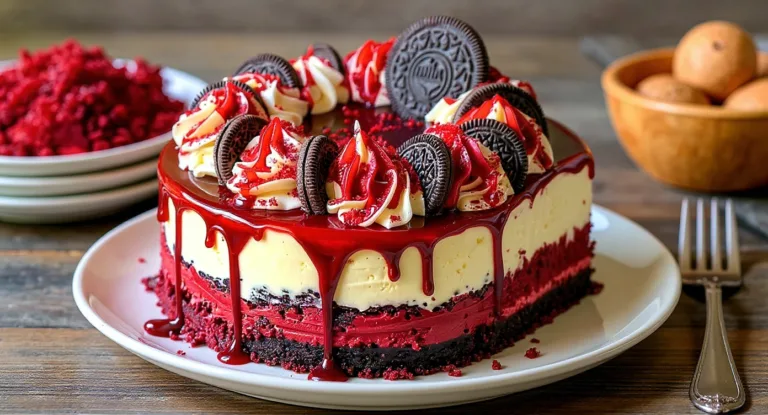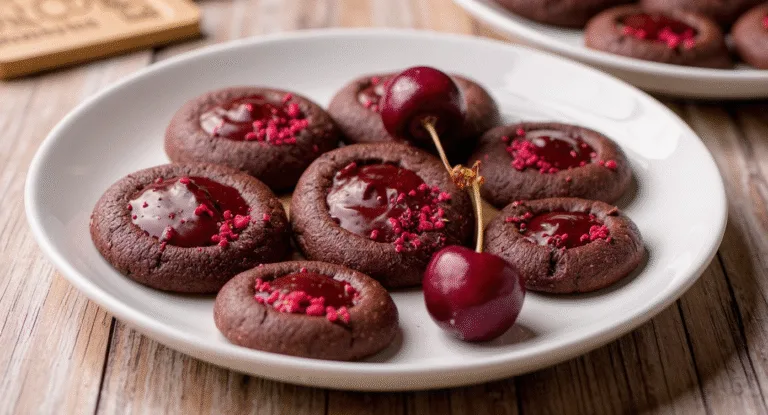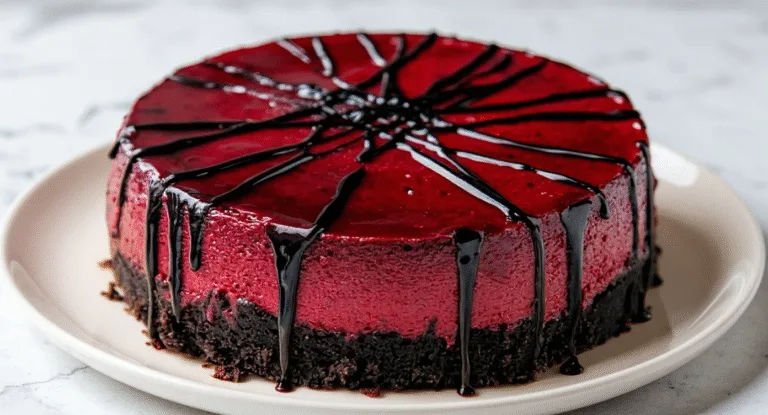Delicious Rhubarb Cake Recipes: Easy & Foolproof Baking Guide
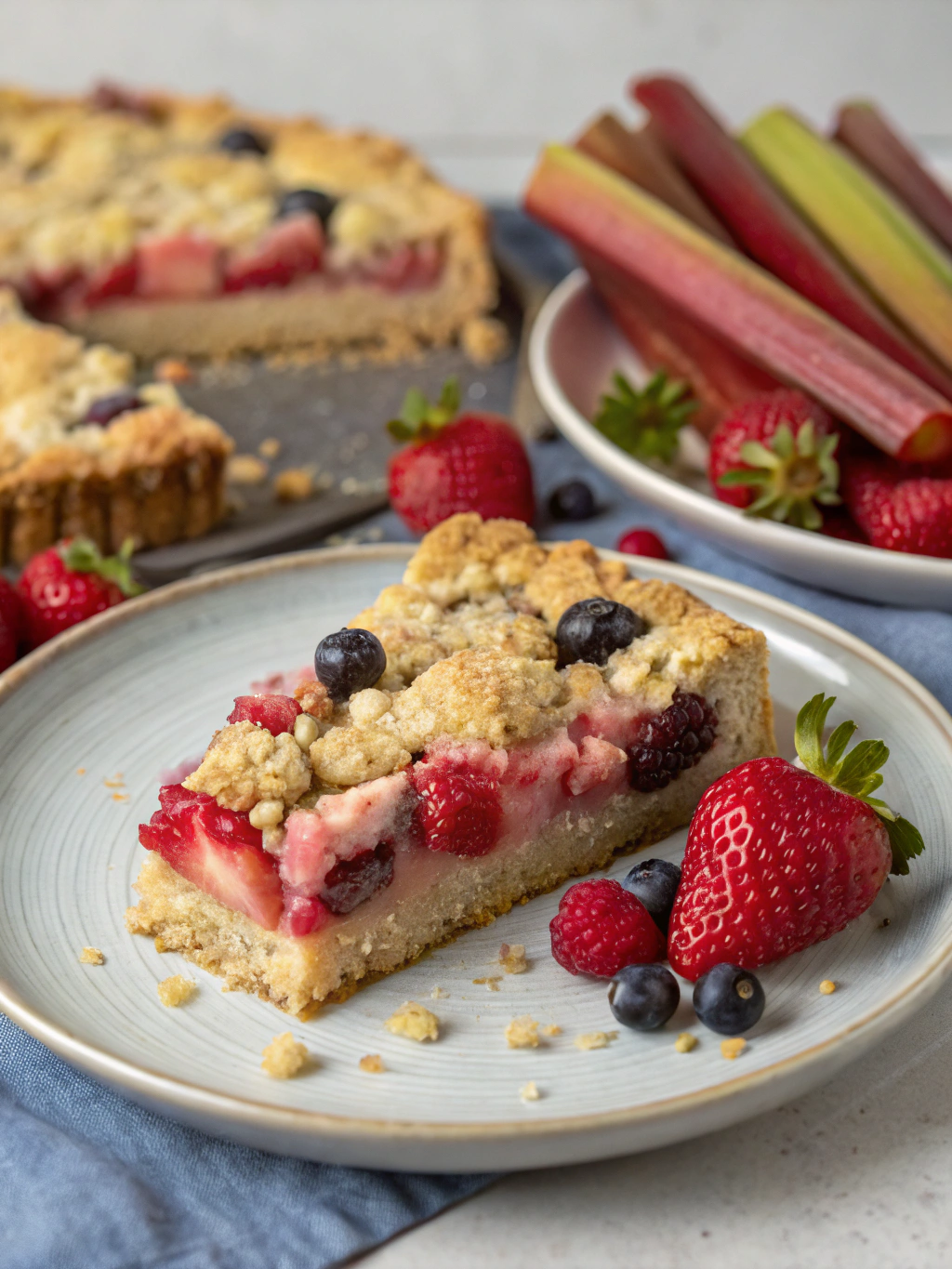
Have you ever wondered how to transform tart, tangy rhubarb into the most delectable cake that’ll have your family asking for seconds? We understand the challenge of working with this unique ingredient, and we’re here to share our favourite rhubarb cake recipes that guarantee success every single time. Whether you’re a seasoned baker or just starting your culinary journey, these tried-and-tested recipes will help you create stunning cakes that perfectly balance rhubarb’s tartness with sweet, moist cake layers.
Understanding Rhubarb: The Perfect Cake Ingredient
Rhubarb brings a distinctive tartness that creates the most wonderful contrast in sweet baked goods. We’ve discovered that this versatile ingredient works brilliantly in cakes because its natural acidity helps tenderise the crumb whilst adding moisture. The key to successful rhubarb baking lies in understanding how to prepare it properly and balance its intense flavour.
When selecting rhubarb for our cake recipes, we always choose stalks that are firm, crisp, and free from blemishes. The colour can vary from green to deep red, and whilst the red varieties look more appealing, the flavour remains consistent across all types. We recommend using rhubarb at its peak season, typically from April through June, when it’s at its most tender and flavourful.
Essential Ingredients for Perfect Rhubarb Cakes
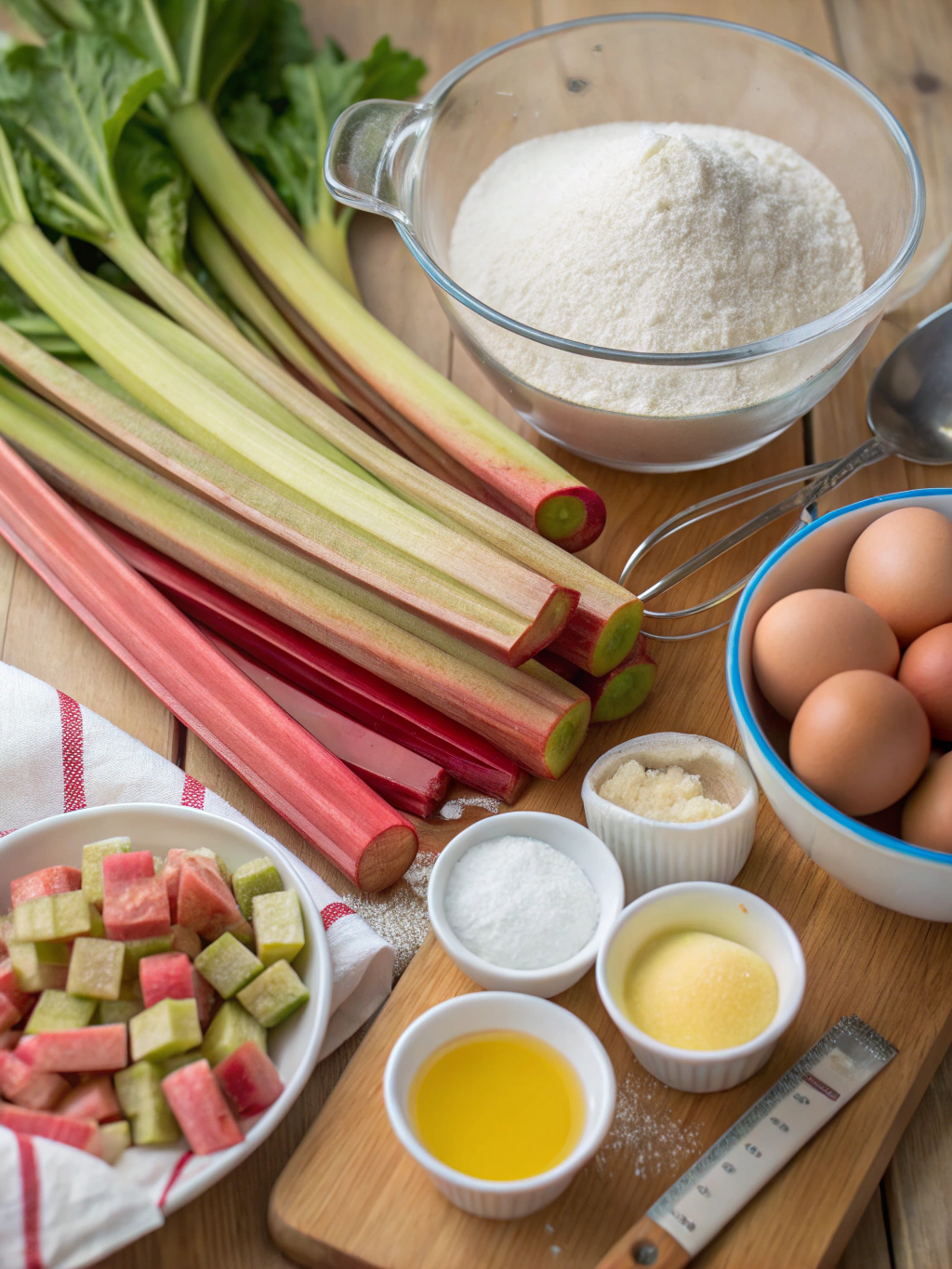
Creating exceptional rhubarb cakes requires quality ingredients that work harmoniously together. We’ve refined our ingredient list through countless baking sessions to ensure consistent, delicious results. Here’s what you’ll need for most of our rhubarb cake variations:
Core Ingredients
- Fresh rhubarb stalks (about 500g for most recipes)
- Plain flour (for structure and stability)
- Caster sugar (balances rhubarb’s tartness perfectly)
- Unsalted butter (adds richness and moisture)
- Free-range eggs (provide binding and lift)
- Baking powder (ensures proper rise)
- Vanilla extract (enhances overall flavour)
- Pinch of salt (amplifies other flavours)
Optional Flavour Enhancers
- Ground cinnamon or ginger for warmth
- Orange zest for citrusy brightness
- Cardamom for exotic depth
- Brown sugar for caramel notes
Classic Rhubarb Upside-Down Cake Recipe
Our classic upside-down cake showcases rhubarb beautifully, creating a stunning presentation that tastes as good as it looks. This recipe has been perfected over years of testing, and we’re confident it’ll become your go-to rhubarb cake recipe.
Method
- Preheat your oven to 180°C (160°C fan) and grease a 23cm round cake tin
- Arrange 400g chopped rhubarb in the bottom of the tin
- Sprinkle 100g brown sugar over the rhubarb
- Cream 150g butter with 150g caster sugar until light and fluffy
- Beat in 3 eggs one at a time, then add 1 tsp vanilla extract
- Fold in 200g self-raising flour alternately with 3 tbsp milk
- Spread the batter carefully over the rhubarb
- Bake for 45-50 minutes until golden and a skewer comes out clean
- Cool for 10 minutes before inverting onto a serving plate
Modern Rhubarb Cake Variations
We’ve experimented with numerous variations to keep our rhubarb baking exciting and fresh. These modern twists on classic recipes incorporate contemporary flavours whilst maintaining the traditional charm that makes rhubarb cakes so beloved.
Rhubarb and Strawberry Layer Cake
This combination creates the perfect balance of tart and sweet, with strawberries complementing rhubarb’s intensity. We layer tender sponge with rhubarb compote and fresh strawberry cream for a truly spectacular dessert. The vibrant colours make this cake perfect for special occasions and summer gatherings.
Spiced Rhubarb Coffee Cake
Our spiced version incorporates warming spices like cinnamon, nutmeg, and ginger, creating a comforting cake that’s perfect with afternoon tea. The crumb topping adds delightful texture contrast, whilst the spices enhance rhubarb’s natural complexity. This recipe works particularly well for brunch occasions.
Watch This Video Tutorial
Professional Baking Tips for Rhubarb Success
Through years of baking experience, we’ve learned several crucial techniques that ensure your rhubarb cakes turn out perfectly every time. These professional tips will help you avoid common pitfalls and achieve bakery-quality results at home.
Preparing Rhubarb Properly
We always wash rhubarb thoroughly and trim both ends before cutting into uniform pieces. For most cake recipes, we cut rhubarb into 2cm pieces, ensuring even cooking and distribution throughout the batter. If your rhubarb seems particularly tart, you can toss it with a tablespoon of sugar and let it sit for 15 minutes before adding to your cake mixture.
Preventing Soggy Bottoms
Rhubarb releases considerable moisture during baking, which can lead to soggy cake bottoms. We prevent this by lightly coating chopped rhubarb in flour before folding it into the batter. This technique helps absorb excess moisture whilst maintaining the cake’s structure.
Seasonal Rhubarb Cake Adaptations
We believe in making the most of rhubarb’s seasonal availability by creating adaptations that work throughout the year. During peak season, we use fresh rhubarb exclusively, but we’ve also developed techniques for using frozen rhubarb when fresh isn’t available.
For winter baking, we often pair rhubarb with warming spices and incorporate it into our Applesauce Cake Recipe for a delightful hybrid dessert. The combination of fruits creates complex flavours that work beautifully in colder months.
Preserving Rhubarb for Year-Round Baking
We freeze chopped rhubarb in measured portions, making it easy to grab exactly what we need for any recipe. Frozen rhubarb works excellently in cake recipes, though we recommend thawing and draining excess liquid before use. This preparation method ensures consistent results regardless of the season.
Troubleshooting Common Rhubarb Cake Issues
Even experienced bakers encounter challenges when working with rhubarb. We’ve compiled solutions to the most common problems, helping you achieve perfect results every time you bake.
Addressing Overly Tart Flavours
If your finished cake tastes too tart, we recommend increasing the sugar content in future batches or adding a sweet glaze. A simple powdered sugar glaze with vanilla can transform an overly tart cake into a perfectly balanced dessert. We also suggest pairing tart cakes with vanilla ice cream or whipped cream for serving.
Fixing Texture Problems
Dense or heavy rhubarb cakes usually result from overmixing the batter or using too much rhubarb. We recommend folding ingredients gently and maintaining the proper fruit-to-batter ratio. For lighter cakes, we sometimes separate eggs and fold in whipped whites at the end, creating a more delicate crumb structure.
Serving and Storage Suggestions
We’ve found that rhubarb cakes taste best when served at room temperature, allowing the flavours to develop fully. These cakes pair wonderfully with vanilla custard, fresh cream, or a simple dusting of icing sugar. For special occasions, we often serve them with a scoop of vanilla ice cream or a dollop of crème fraîche.
Storage is straightforward – we keep our rhubarb cakes covered at room temperature for up to three days, or refrigerated for up to a week. Many of our recipes actually improve after a day, as the flavours meld together beautifully. For our other favourite seasonal treats, you might enjoy our Banana Split Cake Recipe, which offers a different but equally delicious fruit-forward dessert option.
Nutritional Benefits of Rhubarb
Beyond its delicious flavour, rhubarb offers several nutritional benefits that make our cakes slightly more virtuous. This vegetable (often used as a fruit) is rich in vitamin K, vitamin C, and dietary fibre. It’s also low in calories naturally, though we do add sugar to balance its tartness in our cake recipes.
We appreciate that rhubarb contains antioxidants and has been traditionally used for digestive health. Whilst our cake recipes aren’t healthy foods, they do provide a delicious way to enjoy rhubarb’s benefits alongside the pleasure of homemade baking.
Frequently Asked Questions
Can I use frozen rhubarb in cake recipes?
Absolutely! We use frozen rhubarb regularly in our cake recipes. The key is to thaw it completely and drain excess liquid before adding to your batter. Frozen rhubarb may release more moisture, so we sometimes reduce other liquid ingredients slightly to compensate.
How do I know when my rhubarb cake is properly baked?
We test doneness by inserting a skewer into the centre – it should come out with just a few moist crumbs attached. The cake should also spring back lightly when gently pressed in the centre. Rhubarb cakes typically take 45-60 minutes to bake, depending on size and thickness.
Why does my rhubarb cake sometimes turn out soggy?
Soggy rhubarb cakes usually result from excess moisture. We prevent this by tossing chopped rhubarb with a tablespoon of flour before adding to the batter. Also, ensure your oven temperature is accurate and avoid opening the oven door frequently during baking.
Can I reduce the sugar in rhubarb cake recipes?
You can reduce sugar slightly, but remember that it balances rhubarb’s natural tartness. We recommend reducing by no more than 25% to maintain proper flavour balance. Consider adding sweet spices like cinnamon or vanilla to enhance perceived sweetness without adding more sugar.
What’s the best way to cut rhubarb for cakes?
We cut rhubarb into uniform pieces, typically 1-2cm chunks for most cake recipes. This ensures even cooking and prevents some pieces from becoming mushy whilst others remain too firm. Always trim both ends and remove any stringy fibres before cutting.
How long do rhubarb cakes stay fresh?
Our rhubarb cakes stay fresh for 3-4 days at room temperature when properly covered. We often find they taste even better the next day as flavours develop. For longer storage, wrap tightly and refrigerate for up to a week, or freeze for up to three months.
Conclusion
We hope these comprehensive rhubarb cake recipes and techniques inspire you to embrace this wonderful ingredient in your baking adventures. From classic upside-down cakes to modern variations, rhubarb offers endless possibilities for creating memorable desserts that celebrate seasonal flavours.
Remember that successful rhubarb baking comes down to understanding the ingredient’s characteristics and applying proper techniques. With our tested recipes and professional tips, you’ll be creating stunning rhubarb cakes that impress family and friends whilst satisfying your own baking ambitions.
We encourage you to experiment with different flavour combinations and make these recipes your own. Start with our classic version, then branch out to try the modern variations once you’re comfortable with the basic techniques. Most importantly, enjoy the process of creating delicious homemade cakes that showcase rhubarb’s unique character.
Ready to start baking? Gather your ingredients, preheat your oven, and let’s create some magical rhubarb cakes together. Don’t forget to share your results with us – we’d love to hear about your baking successes and any creative variations you discover along the way!

